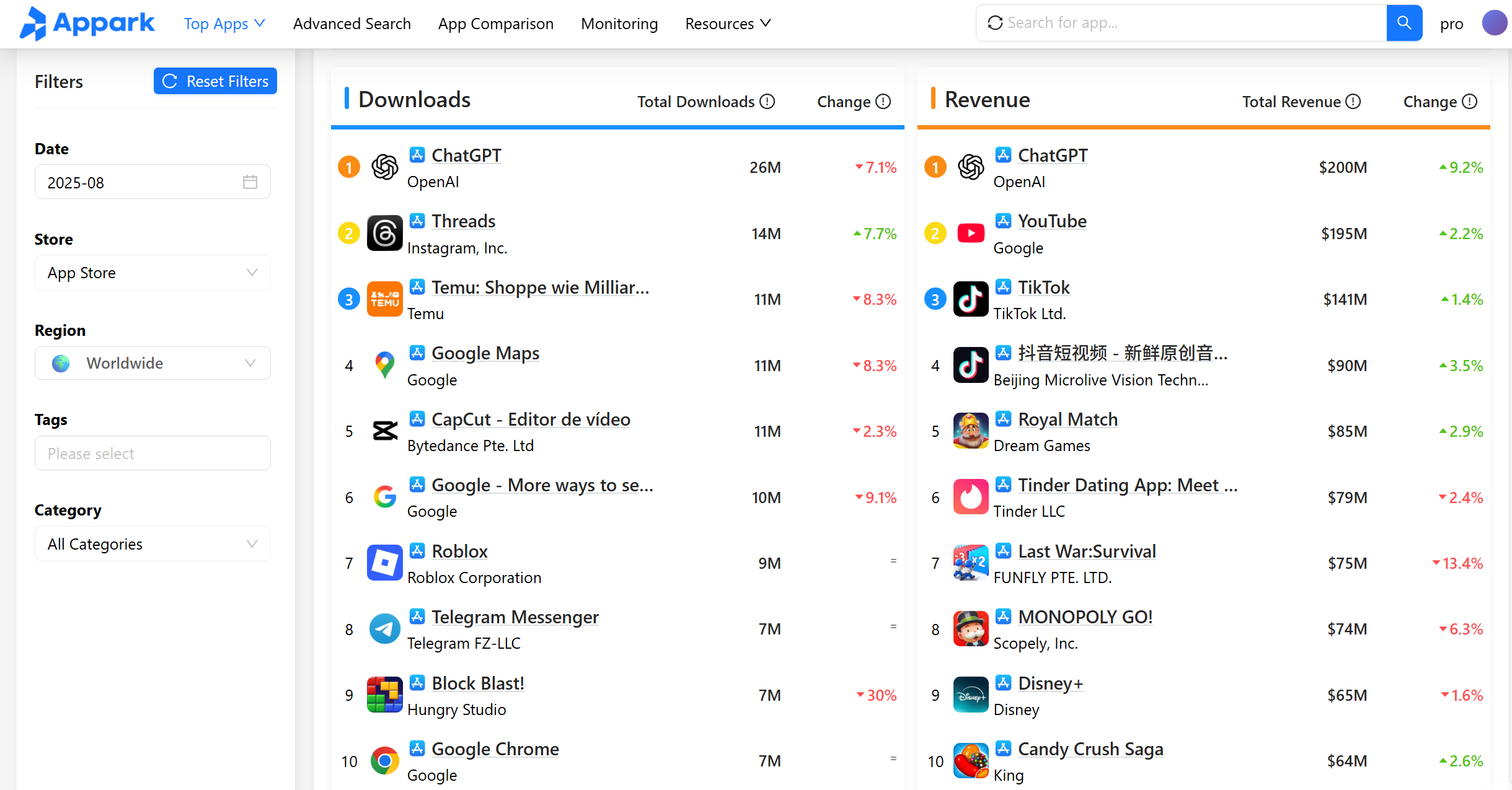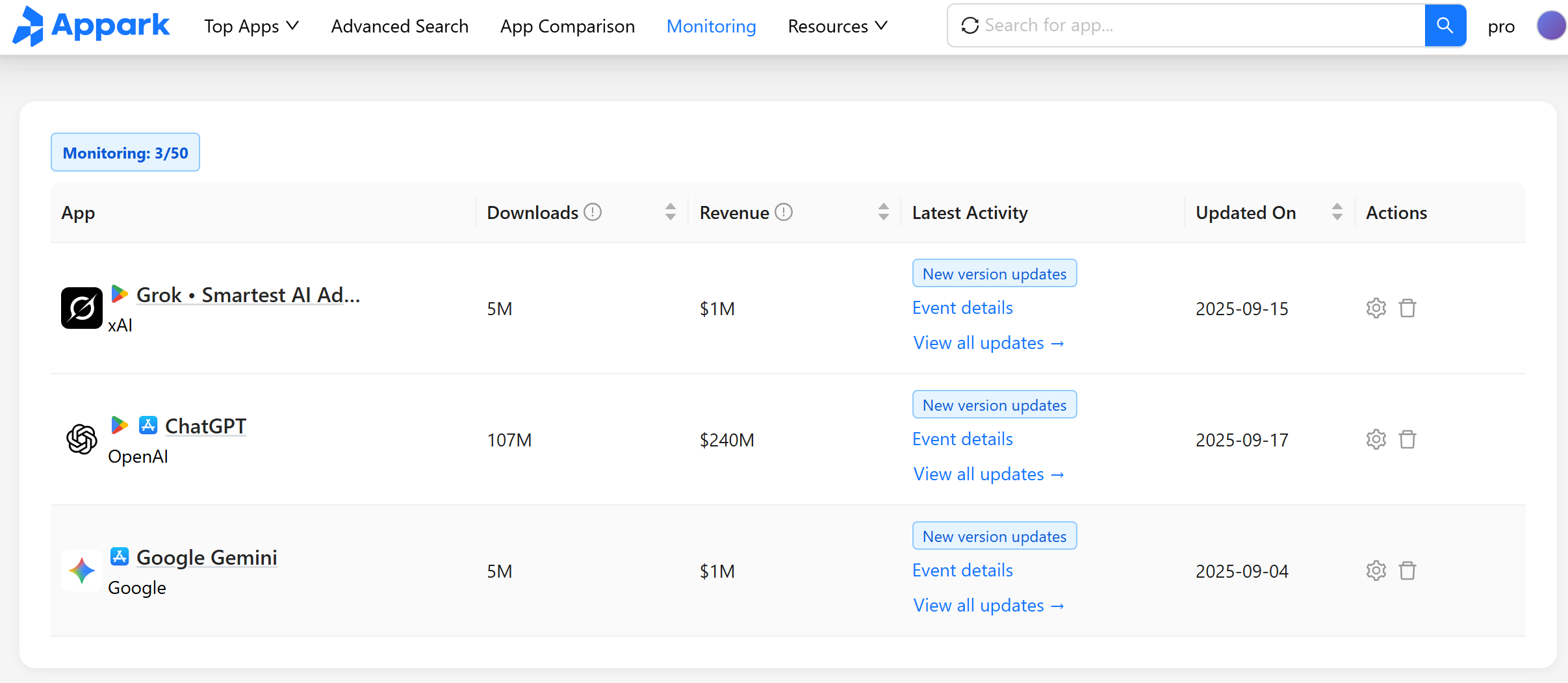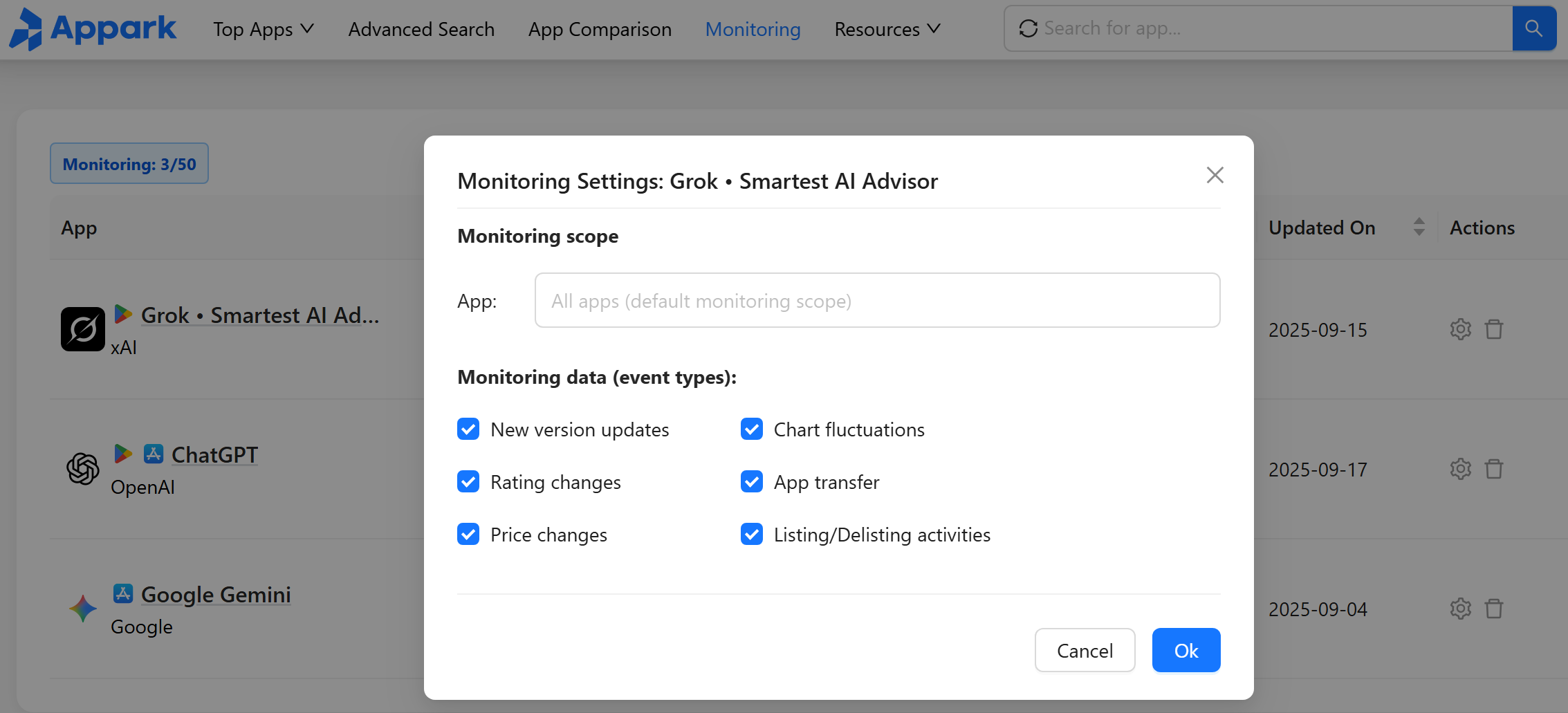How to Do Mobile App Competitor Analysis: Step-by-Step Guide 2025

Introduction
Ever wonder why your app seems invisible while competitors top the charts?
Most developers check downloads or rankings occasionally. But that’s just scratching the surface.
If you ignore competitor insights, you’ll lose installs. Ad spend might go to waste. Revenue opportunities disappear.
This guide shows you how to do mobile app competitor analysis step by step.
By the end, you’ll know:
- The 4 factors that really matter.
- An 8-step process for app competitor analysis.
- Core metrics that actually move the needle.
- Worksheets you can fill in for quick insights.
- The 5 most effective app competitor analysis tools.
- Common traps teams often fall into.
4 Essential Factors to Track in Competitor Analysis
You can’t beat competitors you don’t understand. Watch these four things closely:
- Market Environment – Which category is your app in? What trends are hot? Check top charts and new apps.
- User Behavior – Who downloads your competitors’ apps? What features keep them coming back? Where do users drop off? These patterns reveal opportunities.
- App Store Rules & Algorithms – Stores change all the time. Featured sections, rankings, and search algorithms can shift. Stay updated.
- Ads & UA Landscape – Are competitors running search ads, brand campaigns, or cross-promotions? Ignoring this leaves installs—and revenue—on the table.
Step-by-Step Competitor Analysis Process
Let’s dive deep into how you can actually do mobile app competitor analysis, step by step.
Step 1: Get the Market Straight
Before analyzing competitors, know your market. This is where effective mobile app competitor analysis begins.
- List the top 3–5 subcategories you might enter.
- Check which categories are growing. For example, lifestyle apps might spike in downloads during holidays.
- Identify your reachable users: Are they teens, working adults, gamers, or casual users?
- Check free vs. paid apps, game vs. utility split, and number of new releases.
Quick wins: create a table with category, user type, growth trend, and competition intensity. Low competition + decent demand = hidden opportunity. 
Step 2: Build Your Competitor List
Gathering apps is a critical part of mobile app competitor analysis—but remember, not all competitors matter equally.
- Look at category history: Apps that consistently grow show stable demand.
- Check “Similar Apps” sections on top apps—you can discover apps chasing your same audience.
- Scan top charts: Who’s winning in downloads and engagement?
- Pull top 100 apps in your category to see the full landscape.
Practical tip:
- Make a spreadsheet:
app name | type | rank | downloads | monetization model | notes on features. - Include direct, indirect, and niche competitors for a clearer picture.
Step 3: Prioritize Key Competitors
You can’t track every app in detail. Focus on:
- Market leaders: High downloads and engagement—they set the bar.
- Direct rivals: Apps with similar features and rankings—they’re stealing your audience.
- Emerging threats: New apps growing fast—watch them closely.
- Distant competitors: Low visibility but potentially growing—track only if you spot opportunity.
Add a “focus score”: influence × relevance × growth. Focus on apps with highest scores first.
Step 4: Analyze Competitors’ App Store Optimization & Rankings
Checking keywords, metadata, and creatives is a key step in mobile app competitor analysis.
- Keywords & metadata: Titles, descriptions, subtitles—how often are they updated? Which keywords they rank for?
- Creatives: Icons, screenshots, videos—what style and messaging grabs attention?
- Promotions & features: In-app events, custom pages, featured spots.
- Ads: Check Apple Search Ads or seasonal ad patterns.
- Update trends: Frequent changes usually mean testing for engagement.
Practical move:
- Pick 3 competitors and map their ASO approach in a simple table: keyword use, visuals, promo frequency.
- Experiment with your own icons/screenshots based on what works—but don’t copy.
Step 5: Identify Strengths, Weaknesses, and Monetization Gaps
Find where competitors win and fail—this is your edge.
- Reviews & ratings: Extract 5–10 common complaints and features users love.
- Features & UX: Test the onboarding flow—what’s easy, what’s confusing?
- Monetization & pricing: Compare subscription, ads, freemium models. Could you offer something better?
- Trends & regions: Are there underserved markets or new tech trends (like AI personalization) to explore?
Quick action: table app | strength | weakness | monetization | ideas for your app. Spot gaps your app can fill immediately.
Step 6: Monitor Downloads, Revenue, and Growth Trends
Track real performance metrics:
- Track downloads, growth trends, and market share by country.
- Estimate revenue peaks, seasonal effects, and purchasing power.
- Record updates, in-app events, and promotions over time.
Use charts: downloads over months, revenue spikes, feature releases. Identify spikes’ drivers: ads, ASO, or store feature.
Step 7: Maintain Continuous Competitor Monitoring
Mobile app competitor analysis is ongoing.
- Monthly or quarterly check-ins on competitors, ASO, and market changes.
- Track keyword updates, metadata changes, new features, visuals, and marketing campaigns.
- Keep a “competitor watchboard” spreadsheet. Highlight any big shifts.
- Adapt fast—small tweaks now can keep you ahead.

Step 8: Turn Insights Into Action
Data is only useful if applied.
- Who truly matters in this space?
- Which strategies actually work?
- What gaps can you exploit right now?
- How can your app stand out in design, features, or messaging?
Actionable move: write a 1-page roadmap with ASO, marketing, and product tweaks. Assign one action per week.
Key Metrics for Actionable Mobile App Insights
To make your mobile app competitor analysis actionable, track these core metrics before filling in any tables.
- ASO: Keyword rankings, app metadata, and visual creatives.
- User behavior: Downloads, retention, and what users are saying in reviews.
- Product: Feature set, UI/UX, and update frequency.
- Marketing: Ad campaigns, channel reach, social buzz.
- Monetization: Subscriptions, in-app purchases, ad revenue, and pricing tiers.
- Market coverage: Regions, localization, and partnerships.
Keeping an eye on these will make sure you’re not just collecting random numbers—you’ll see what really matters in your niche.
Competitor Analysis Worksheet
Got the data? Make it useful. Map basics, track marketing/growth signals, spot gaps.
Table 1: Core Competitor Comparison
Table 2: Marketing Moves & Growth Opportunities
How to Use These Tables
- Start with basics. See who dominates, monetization, and features users like.
- Layer marketing view. Spot levers behind growth: keywords, visuals, promos, review trends.
- Look for weak spots. Every review complaint or monetization gap = opportunity.
- Build your playbook. Update monthly or quarterly for ASO, product, and marketing decisions.
5 Practical App Competitor Analysis Tools
- Apple Search Ads – See competitor keywords and ad placements. Track campaigns. Find high-converting keywords.
- Sensor Tower – Insights on downloads, revenue, rankings, keywords. Spot trends fast.
- Appark – Full competitor view: rankings, comparisons, monitoring. Set alerts for new releases, promos, metadata changes. Dig into downloads, revenue, UX, features, and monetization.
- ASOTools– Track keyword rankings, visibility, downloads in real time. Spot drops and optimize metadata & creatives.
- SocialPeta – Monitor competitor ads on mobile and social channels. Analyze formats, messaging, visuals. Test similar approaches.
Common Pitfalls & Mistakes
Common traps that trip up teams:
- Copying rivals blindly: Just because they do it doesn’t mean it fits your app. Understand why first.
- Ignoring indirect competitors: Apps outside your category may steal users. Watch overlapping functionality apps.
- Focusing only on numbers: Downloads & revenue show part of the story. Reviews, retention, and UX pain points reveal what users care about.
- One-off analysis: Competitors, trends, and seasonal campaigns change. Check regularly.
- Overlooking regional/cultural differences: What works in one market may fail in another. Consider localization, pricing, preferences.
Pro tip: Write one concrete action to fix each mistake. Example: if ignoring indirect competitors, add a “watch list” and check monthly.
Conclusion
Mobile app competitor analysis isn’t a one-time task.
It’s a continuous process that guides app growth.
Start small, track the right metrics, and gradually build a complete mobile app competitor analysis system to guide your app’s growth.
Tools like Appark make it easier: monitor competitors, compare features, and watch growth signals.